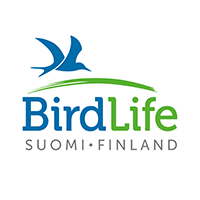Home range sizes and nychthemeral habitat uses by the Northern Shoveler (Spatula clypeata) on prenuptial stopovers in Vendée marshes, western France
DOI:
https://doi.org/10.51812/of.142037Keywords:
Northern shoveler, freshwater invertebrates, habitat use, wetlands, spring migrationAbstract
The wetlands of Marais breton (MB) and Marais poitevin (MP) on the French Atlantic coast are commonly used by several duck species, especially as stopover sites during the prenuptial migration. Understanding the ecological requirements of Anatidae at spring stopover sites is important to define appropriate management actions that might have a carry over effect on the subsequent reproduction success. This study focused on the Northern Shoveler (Spatula clypeata), a species that regularly visits the two marshes during spring and fall migrations and is highly dependent on freshwater invertebrates as the food resource. Fifteen Northern Shovelers were equipped with GPS/GSM tags and monitored during their stopover in both marshes in 2020 and 2021. The aims of the study were to understand the habitat use on stopover sites and relate home range (HR) size with characteristics of the feeding habitats (such as freshwater invertebrates’ density and diversity). The HR area of the studied individuals was mainly constituted of ponds in MB (83% of the HR) and wet meadows in MP (71% of the HR). The Northern Shovelers equipped with tag spent more than 72 consecutive hours in 31 wetlands, using them during the day, at night or all day. The diurnal visited sites were deep ponds that were sparsely vegetated and dominated by microcrustaceans, whereas the nocturnal visited sites were wet meadows or ponds with high aquatic vegetation cover and high invertebrate taxonomic diversity. The 31 described sites appeared to be rich in freshwater invertebrates, with no significant difference in invertebrate densities between the diurnal and nocturnal sites. HR sizes were highly homogenous between the two study sites (MB and MP), between sexes or between age classes. In conclusion, according to this study, an appropriate HR for the Northern Shoveler at spring stopover is 8.49 ± 5.95 km² (mean ± standard error).
Downloads
Additional Files
Published
Versions
- 2024-10-18 (2)
- 2024-10-13 (1)
Issue
Section
License
Copyright (c) 2022 Axelle Moreau, Clément Rousseau, Pierrick Bocher, Christine Dupuy, Sébastien Farau

This work is licensed under a Creative Commons Attribution 4.0 International License.








